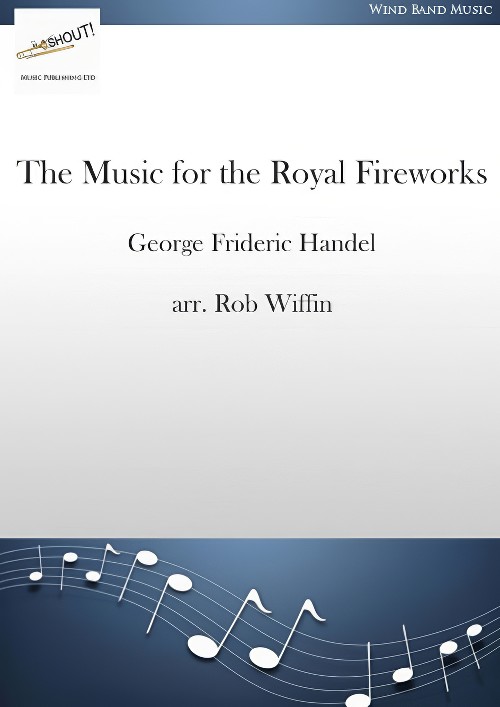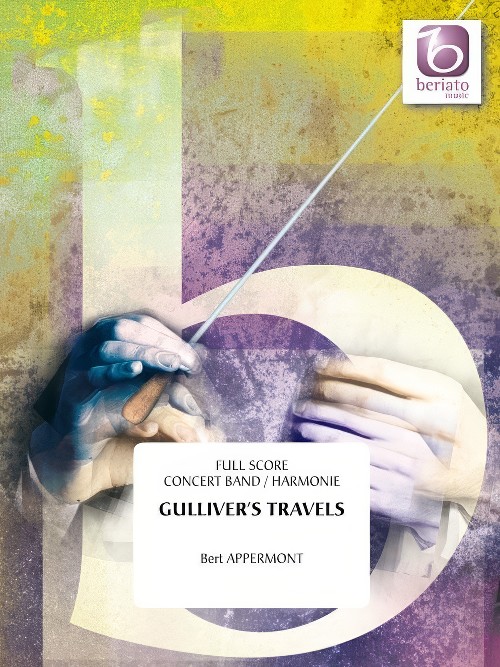Results
-
 £53.50
£53.50Come On Over Baby (All I Want Is You)
Hot new dance hit from pop diva Christina Aguilera! This rockin' arrangement is easy to learn and fun to play.
Estimated dispatch 7-14 working days
-
 £53.50
£53.50If I Didn't Have You (from Monsters, Inc.) - Randy Newman
After years of writing clever and memorable tunes for the movies (Toy Story and A Bug's Life to name a few) Randy Newman finally won a much deserved Grammy for this song from the hit movie Monsters, Inc. Michael Brown has skillfully arranged it for young players in a medium 2-beat swing style.
Estimated dispatch 7-14 working days
-
 £38.50
£38.50I Gotta Feeling
Sitting atop the pop charts for over three months, this mega-hit from the Black Eyed Peas boasts a driving, energetic groove and an infectious melody. A solid hit for bands as well!
Estimated dispatch 7-14 working days
-
 £72.99
£72.99Do You Hear What I Hear? - Gloria Smith
Two of our most talented writers have joined forces to create a refreshing new setting of this holiday standard. Also available: 47123065/$1.60 SATB 47123066/$1.60 SAB 47123067/$1.60 2-Part 47123065/$1.60 SATB 59225060/$35.00 opt. String Pak
Estimated dispatch 7-14 working days
-
 £435.40
£435.40Goldberg 2012 - Svein H. Giske
The first time I heard Bach's Goldberg Variations was in the movie Silence of the lambs, in the early 1990s. I noticed the beautiful background music in one of the scenes, but at that time I didn't know what it was. A few years later, when I was studiying at the Grieg Academy, I got to know the entire piece. For me, this is a piece of music which I can listen to countless times. I think it sounds as fresh today as it did more than 15 years ago and it never ceases to inspire me. Both Bach's composition and Glenn Gould's famous 1955 recording (which was the first one I heard) still makes a great impression on me. Before Gould recorded it at age 22, it wasn't a highly ranked piece amongst pianists and Bach was by many viewed as a bit old-fashioned. The young Canadian turned all this around. He managed to portray Bach in a reformed way, producing fine nuances in phrasing and making the many layers in Bach's music more transparent than anyone before him. Thus he plunged both himself and Bach (back) onto the international music scene. When The Norwegian Band Federation (NMF) asked me to write the test piece for NM in 2012, it was only natural for me to use the Goldberg Variations as a starting point and inspiration for my work. Since I was a teenager at NMF's summer courses in the mid eighties I've always listened to many different styles of music. Growing up in Sunnmre with the Brazz Brothers as teachers and mentors, jazz-, pop/rock- and folk music were early on a natural part of my musical background. I also have my classical education from the Grieg Academy on trumpet. As the title of my piece implies, I've wanted to bring Bach to the present and put his music into various modern musical landscapes. I think you can bring about a special kind of energy when music from different genres are mixed and I've tried to do this by mixing Bach with artists and musical styles from the present. In Goldberg 2012, the music is often constructed by several layers, which in a way are living parallel musical lives. They are seemingly moving or floating freely, almost unaware of each other, but bound together by the same basic pulse. The rythms, however, are often notated on a different rythmic subdivision level than the usual 8th- or 16th note levels. By doing this, I hope to achieve transparent sounds that rythmically are perceived as more free and detached from each other. In large sections of the piece, pop/jazz is fusioned with elements from Bach. I guess you could have this little scene as a synopsis for the piece: picture a group of musicians meeting: some are classical performers, some are jazz. They start to improvise together, each in their own voice or musical dialect and I'm sort of in the middle, trying to write down what they are playing. This is what I feel much of Goldberg 2012 is about. The foundation of the piece, in addition to Bach and references from pop/jazz music, lies also in my own material. This material, basically two chords, is heard in it's purest form in the 1st movement. I use these chords to create scales, new chords and different motifs which contribute to blend together the different moods of the piece. It has not been my intention to copy Bach's form (theme and 30 variations), but rather to use the bits and pieces that I like the most as an inspiration for my own variations. The 1st movement, Aria 2, is for my 3rd son, Olav, who was born on the 21st of April 2011, and the 5th movement, From long ago, is dedicated to the memory of my father, Svein J. Giske, who passed away on the 6th of June 2011. -Svein H. Giske, January 2012-
Estimated dispatch 7-14 working days
-
 £99.95
£99.95The Music for the Royal Fireworks (Concert Band - Score and Parts) - Handel, George Frideric - Wiffin, Rob
This complete arrangement of The Music for the Royal Fireworks was made in January 2017 at the request of Lieutenant-Colonel Kevin Roberts, Senior Director of Music of the Household Division. I tried to make the version as close to the original as possible while arranging it to work for modern symphonic band. Although tempting, I did not want to ?€arrange?€ it too much, certainly not as much as the familiar Hamilton Harty arrangements. Consequently I kept the whole work in the same key of B flat, either major or minor, and made a few logical adjustments for the lower key and the technical facility of modern instruments. I have added a few apposite dynamics and articulations. I have also notated the music in the appropriate ?€French?€ style, writing out the double-dotted figures, especially in the Overture. In doing this I have gone further than the limited suggestions in the Eulenburg edition and taken account of the expertise of exponents of ?€Historically Informed Performance?€. The instrumentation is for full band but would work without trombones and saxophones and, to a lesser extent, flutes; clarinets though, are essential.Duration: c. 20
Estimated dispatch 7-14 working days
-
 £134.99
£134.99Gulliver's Travels (Concert Band - Score and Parts) - Appermont, Bert
The book Gullivers Travels (1726) by author Jonathan Swift formed the provocation for writing this composition. Even though this composition isnt a literal representation of the original story, a number of elements were still retained. The ships doctor Gulliver finds himself in 4 (fictive) areas, each with their own inhabitants and customs. Each part of this suite also received the name of one of these areas:I. Lilliput The enterprising Lilliputians are represented by a playful, common theme in the first part.II. BrobdingnagIn the land of "Brobdingnag" Gulliver is carried off by gigantic giants, which you hear approaching with the sounds of the bassinstruments. The same theme is constantly repeated and quickened in order to increase the tension.III. LaputaLaputa is an island that floats in the air; its inhabitants are strange people with slanting heads. The dreamy, special atmosphere is especially well conveyed here.IV. The HouyhnhnmsFinally Gulliver finds himself in the land of the Houyhnhnms, where intelligent and noble horses rule over the primitive, undeveloped people (yahoos). The trumpets in the brilliant opening express the galloping horses; the gallant theme that follows (horns and trombones) symbolises the primitive yahoos. The whole composition ends with a big finale.I intentionally tried to limit the degree of difficulty of Gullivers Travels. Despite this I think that this work can appeal to many orchestras due to the colourful orchestration (cues are provided where needed), the simple and clear theme and the highly imaginative breeding ground of a beautiful story around which this composition is built." Duration: 8:00
Estimated dispatch 7-14 working days
-
 £134.99
£134.99Gulliver's Travels - Bert Appermont
The book Gullivers Travels (1726) by author Jonathan Swift formed the provocation for writing this composition. Even though this composition isnt a literal representation of the original story, a number of elements were still retained. The shipsdoctor Gulliver finds himself in 4 (fictive) areas, each with their own inhabitants and customs. Each part of this suite also received the name of one of these areas:I. Lilliput The enterprising Lilliputians are represented by a playful, common themein the first part.II. BrobdingnagIn the land of "Brobdingnag" Gulliver is carried off by gigantic giants, which you hear approaching with the sounds of the bassinstruments. The same theme is constantly repeated and quickened in order to increase thetension.III. LaputaLaputa is an island that floats in the air; its inhabitants are strange people with slanting heads. The dreamy, special atmosphere is especially well conveyed here.IV. The HouyhnhnmsFinally Gulliver finds himself in the land of theHouyhnhnms, where intelligent and noble horses rule over the primitive, undeveloped people (yahoos). The trumpets in the brilliant opening express the galloping horses; the gallant theme that follows (horns and trombones) symbolises the primitiveyahoos. The whole composition ends with a big finale.I intentionally tried to limit the degree of difficulty of Gullivers Travels. Despite this I think that this work can appeal to many orchestras due to the colourful orchestration (cues areprovided where needed), the simple and clear theme and the highly imaginative breeding ground of a beautiful story around which this composition is built."
Estimated dispatch 7-14 working days
-
 £252.10
£252.10Rhapsodie Norvegienne Nr.2 - Johan Halvorsen
This arrangement was written for Dragefjellets Musikkorps Bergen for their performance at the Norwegian Wind Band Championships in 2019.The original orchestral work is one of our country's greatest national works for symphony orchestra.It combines Norwegian folk music with the symphonic tradition, but on a slightly different way than Edvard Grieg.Compared to the original score, I have made parts of the work more chamber-music like by making the instrumentation a bit thinner. By doing this, I hope the span in dynamics will benefit the tutti sections as well. Unlike the symphony orchestra, concert bands do not have the large string section to enrich the soundscape.- Svein H. Giske -
Estimated dispatch 7-14 working days
-
£109.00
